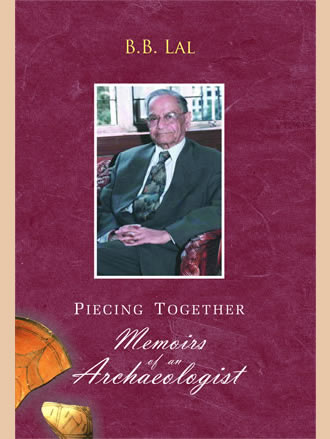PIECING TOGETHER: Memoirs of an Archaeologist
PIECING TOGETHER: Memoirs of an Archaeologist is backordered and will ship as soon as it is back in stock.
Couldn't load pickup availability
Genuine Products Guarantee
Genuine Products Guarantee
We guarantee 100% genuine products, and if proven otherwise, we will compensate you with 10 times the product's cost.
Delivery and Shipping
Delivery and Shipping
Products are generally ready for dispatch within 1 day and typically reach you in 3 to 5 days.
Book Details
- Pages: xviii+270
- Format: HB
- ISBN: 9788173054174
- Edition: 1st
- Publisher: ARYAN BOOKS INTERNATIONAL
- Size: 15cm x 22cm
- Product Year: 2011
In 1921, just when Daya Ram Sahni struck his pickaxe at Harappa in Punjab, bringing to light the earliest civilization of the Indian subcontinent, in a far off village in Uttar Pradesh was born a child, named Braj Basi Lal, who, in time to come, was ordained to carry on the mission of Sahni at Kalibangan in the Sarasvati Valley in Rajasthan. He discovered over here many new features of the Harappan Civilization, including the earliest (circa 2700 bce) agricultural field met with anywhere in the world. One of Lal?s passions has been to ascertain if there was any historical basis for the two great Indian epics, viz., the Mahabharata and the Ramayana. The book marshals the evidence from various sites excavated by him, which shows that these epics did have a basis in history, though they are full of interpolations. The book also deals with the Mandir-Masjid issue at Ayodhya and shows that there existed a Hindu temple in the Janma-Bhumi area prior to the construction of the Babari Masjid. Finally, the oft-debated issue of ?Aryan Invasion? of India has been dealt with, showing, in unequivocal terms, that there was no such ?invasion? nor even ?immigration? and that the Vedic people were indigenous to the Indian soil, their roots traceable back to the 6th millennium bce. On the contrary, literary-cum-archaeological evidence shows that some of the Vedic people themselves migrated as far west as present-day Turkey, early in the 2nd millennium bce. Interleaved with these archaeological discoveries are certain narratives which give a glimpse of Professor Lal?s personal life ? a naughty (nasty?) boy, affectionate teachers, ?rebirth? in 1957, interactions with fellow archaeologists, whisked away by a damsel, surviving five major car accidents without any injury and lessons he learnt from his life. The Epilogue says it all.





